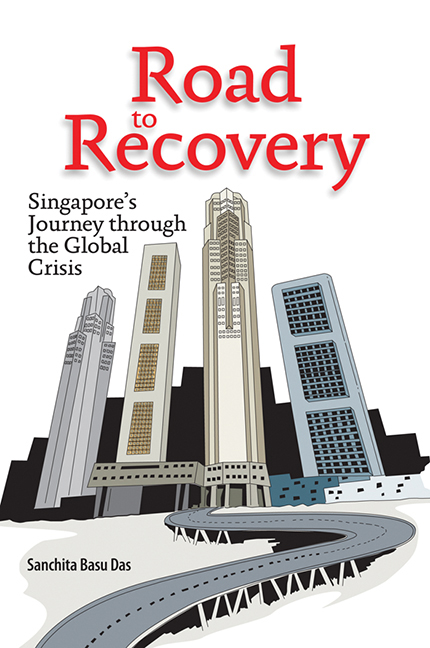Book contents
- Frontmatter
- Dedication
- Contents
- List of Tables
- List of Figures
- List of Boxes
- Foreword
- Acknowledgements
- Abbreviations
- 1 Introduction
- 2 Global Financial and Economic Crisis: Causes, Impact, and Policy Response
- 3 Impact of Global Economic Crisis on Singapore
- 4 Singapore's Policy Responses to the Global Economic Crisis
- 5 Singapore Economic Perspective and Future Policy Directions
- 6 Lessons Learnt
- Appendix I MAS Monetary Policy Statements
- Appendix II Key Budget FY2009 Initiatives
- Appendix III Summary of the ESC Key Recommendations
- Appendix IV Key Budget FY2010 Initiatives
- References
- Index
- About the Author
2 - Global Financial and Economic Crisis: Causes, Impact, and Policy Response
Published online by Cambridge University Press: 21 October 2015
- Frontmatter
- Dedication
- Contents
- List of Tables
- List of Figures
- List of Boxes
- Foreword
- Acknowledgements
- Abbreviations
- 1 Introduction
- 2 Global Financial and Economic Crisis: Causes, Impact, and Policy Response
- 3 Impact of Global Economic Crisis on Singapore
- 4 Singapore's Policy Responses to the Global Economic Crisis
- 5 Singapore Economic Perspective and Future Policy Directions
- 6 Lessons Learnt
- Appendix I MAS Monetary Policy Statements
- Appendix II Key Budget FY2009 Initiatives
- Appendix III Summary of the ESC Key Recommendations
- Appendix IV Key Budget FY2010 Initiatives
- References
- Index
- About the Author
Summary
The global financial turmoil surfaced in the middle of 2007 as a result of defaults of sub-prime mortgage loans in the United States. It was blown into an unprecedented financial crisis in 2008 when a series of major financial institutions in the United States and Europe started to fail. Around the world stock markets fell, financial institutions were bought out, and massive coordinated actions by the authorities were taken to inject liquidity into money markets and restore confidence in the financial systems. Strong calls were made at the Group of Twenty (G-20) level for a new financial system to prevent future financial crises and to maintain global financial stability.
As the U.S. sub-prime mortgage crisis spread to the rest of the U.S. financial system and other industrialized- country financial markets, a significant slowdown was observed in economic growth of the U.S., Europe, and Japan. The financial sector crisis subsequently moved to the real economy. Although Asian financial institutions' exposure to sub-prime-related products was limited, the impact was felt through capital flow and trade channels.
Accordingly, the IMF in its World Economic Outlook (WEO) Update publication (January 2010) placed global growth at 3.0 per cent in 2008 and a contraction of –0.8 per cent in 2009. This represented a significant slide from an economic growth of 5.0 per cent observed in 2006–7. The advanced economies were in or close to recession in the second half of 2008 and early 2009, and showed some signs of recovery later in 2009. Growth in most emerging and developing economies was below trend, although key emerging economies in Asia, like China and India, showed higher resiliency.
Genesis of the Global Financial Crisis
The global financial crisis was triggered in August 2007 when the U.S. sub-prime loan defaults began to rise and foreclosures increased. At a fundamental level, however, the crisis could be attributable to the persistence of large global imbalances, which in turn was a result of a long period of loose monetary policy in the U.S. economy.
- Type
- Chapter
- Information
- Road to RecoverySingapore's Journey through the Global Crisis, pp. 16 - 43Publisher: ISEAS–Yusof Ishak InstitutePrint publication year: 2010



